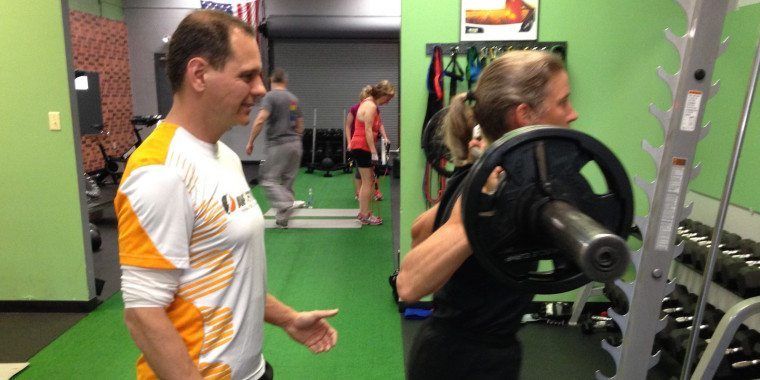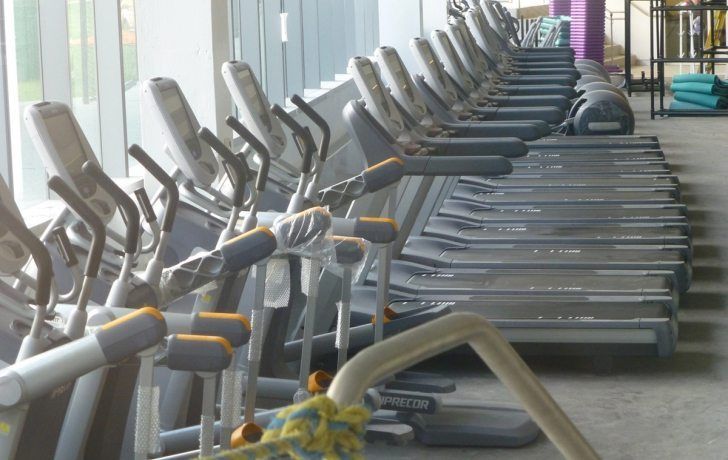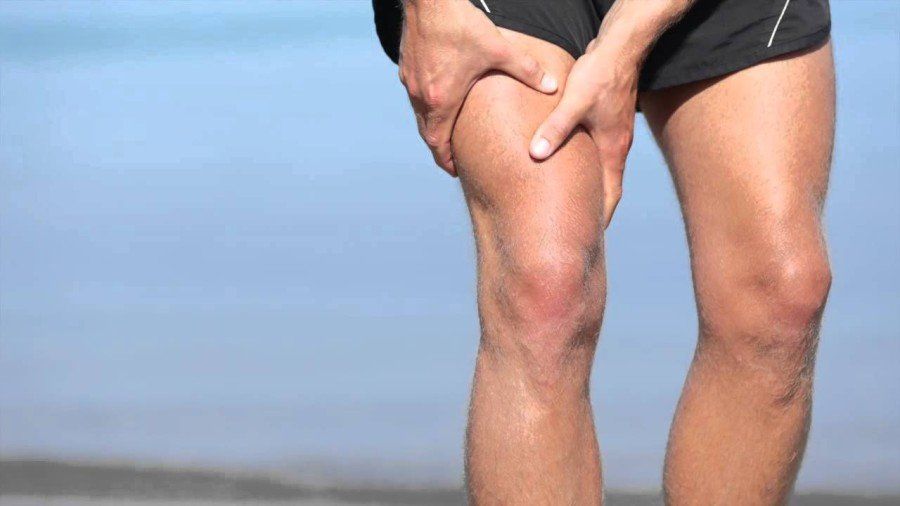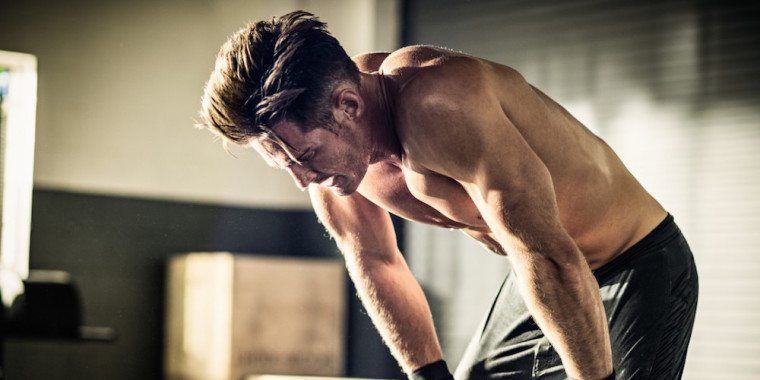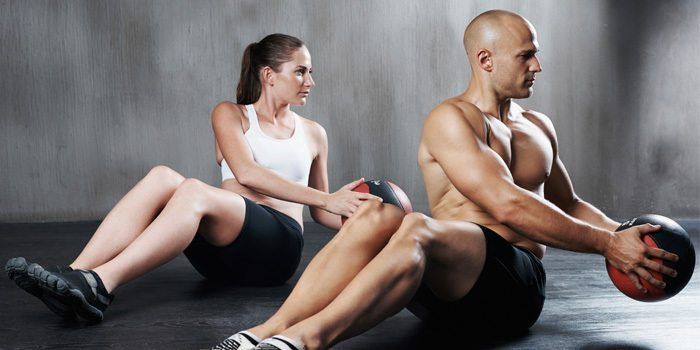Medicine balls provide an effective means of improving muscular power, endurance and functional fitness, and anyone can use medicine balls to help improve their fitness. Medicine balls are used in a variety of settings — in health clubs to accommodate the health and fitness goals of novice exercisers and by advanced athletes to achieve sports-specific conditioning goals.
The following, courtesy of the American College of Sports Medicines, offers tips on the benefits of using a medicine ball and how to effectively incorporate one into your workout routine.
Why use a medicine ball?
Medicine ball training can be effective in improving muscular power, and movement velocity is a critical factor in power development. Plyometrics increase the power of the movement by harnessing the natural elastic components of the muscles and tendons as well as the stretch reflex. These quick movements develop explosive power through muscular actions.
Medicine ball training is one of the many components in an individual’s routine, as the exercises promote variety by introducing a novel stimulus for physiological adaptation. Training with a medicine ball helps to develop total body power, muscular endurance and flexibility. Exercises involving tossing and catching the ball are typically classified as a plyometric exercise (a specific type of exercise utilizing the stretch-shortening cycle of the muscle to produce power).
Although used as part of strength and conditioning programs, medicine balls typically do not provide a sufficient load to produce the overload needed to create strength gains in certain exercises. However, they do provide a more comfortable and feasible means of safely increasing the load for certain exercises, and improvement in muscular power have been demonstrated, especially for upper body movements.
Selecting a medicine ball
Medicine balls can be found in a variety of sizes and weights, typically ranging from a few inches in diameter (baseball-sized) to larger than a basketball and from one to 50 pounds and even heavier for athletes training for power. Most medicine balls are round, but they are also available with built-in handles to offer improved grip and in shapes such as footballs for sport-specific training. In addition, some medicine balls have been designed with single or double handles or ropes in order to increase specificity to training.
Usually, medicine balls are constructed of either leather, nylon or some rubberized material. Size does not always determine the weight of the medicine ball. In general, smaller and lighter balls should be used for training speed, while heavier medicine balls would be utilized for strength-speed and/or power training.
Consider the following questions when selecting a medicine ball:
People tend to choose a heavier ball than required. The general rule when selecting a medicine ball is that it must be heavy enough to visibly slow the motion, but not so heavy that control, accuracy or range of motion are lessened. Fatigue at the end of a workout will diminish motor skills; therefore, if you lose control, then the ball is too heavy. For power training, it is recommended that the medicine ball’s weight corresponds to about 30-50 percent of the one-repetition maximum of a similar weight training exercise.
Following the principle of progressive overload, as you become stronger and more economical in your movement, then you will need to progress to the next size of ball.
It is better to start with a light ball and gradually work up to greater resistance. This will ensure that proper movement technique and form is not compromised.
The size and shape of the medicine ball will vary depending on the exercise being performed. It is important to remember that power and multi-joint exercises, such as the backward overhead medicine ball throw or the overhead medicine ball squat, might require a larger size ball in order to work muscles sufficiently. However, exercises done with the ball at arms’ length that seem manageable when held close to the body may be too heavy when held away from the body.
Using a medicine ball
Ensure there is adequate workout space. Many medicine ball exercises involve throwing and catching; therefore, individuals must have spacious and clutter-free area. The minimum recommended area is about 20 square yards, especially when performing throwing exercises.
Medicine ball exercises
- Backward Overhead Medicine Ball Throw – Begin in a squat position holding the medicine ball in both hands between the legs. In a quick movement, bring the arms upward and over the head releasing the ball at chest level and following through. Repeat for the desired number of repetitions.
- Chest Pass – With a partner, position your feet shoulder-width apart, in a power stance. Make sure your knees are slightly flexed and abdominals tight. Pass the ball to your partner at chest level. Receive the ball with a strong core and legs while retaining your balance. Repeat for the desired number of repetitions.
- Depth Push-Up – Lie in the push-up position with both hands on the medicine ball and elbows extended. Quickly remove the hands from the medicine ball and drop down. Contact the ground with hands slightly farther than shoulder width apart and elbows slightly flexed allowing chest to almost touch the medicine ball. Immediately and explosively push up by fully extending the elbows and putting your palms back onto the medicine ball. Repeat for the desired number of repetitions.
- Medicine Ball V-Ups – Lie supine, on your back with legs straight and arms extended straight overhead holding the medicine ball. Simultaneously raise your legs and trunk into a seated V position, bringing the medicine ball and legs upright overhead. Return to start position and repeat for the desired number of repetitions.
Training partners
Although not necessary for every exercise, a number of medicine ball exercises require a partner. Training partners should match in approximate size and strength, and you should remember to practice each exercise before attempting a more intense pace or rhythm. It will provide partners a chance to learn proper execution of the movement while ensuring accuracy and coordination.
Establish a smooth rhythm of motion to reduce surprises and accidents. When throwing the medicine ball, determine whether your partner is ready to receive the ball. When receiving, ensure that you keep your eyes on the ball. Catch the ball with extended and open hands kept close together, and at contact, let the arms flex to absorb the impact.
To learn more about the various functional fitness exercises available, contact us at 216-236-3674.
FacebookTwitterShare
